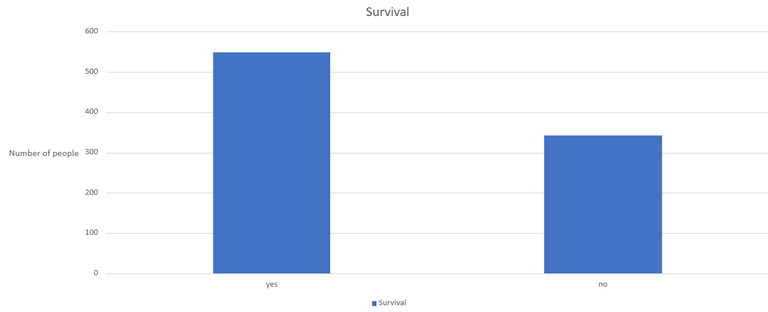A brief Insight and Analysis of Titanic Data
INTRODUCTION
Today, as part of the internship program organized by HNG, I have chosen this medium to publish a quick insight and analysis of the passenger/cabin crew data of the infamous ship. For those that may be interested, a link to the dataset can be found on kaggle here.
The specific objectives of this task are:
- to review the provided dataset.
- to identify initial insights from the data at first glance.
- to write a brief technical report detailing my observations.
Come with me.
Observations from the dataset
A total of 891 people were aboard the Titanic ship out of which 204 were cabin members and the remaining 608 were passengers. In total, 577 were males while the rest (314) were females.
The people on the Titanic were of diverse age ranges. The average age of everyone aboard the Titanic was 29.7 years with the smallest being 0.42 years old, apparently a less than 1-year-old baby, and the oldest being an 80-year-old male. Information about age is missing for 177 people aboard the ship.
Relationships among the people on the Titanic ship vary from sibling, and spousal to parent/child relationships. A total of 283 people out of 891 had their siblings and or their spouses on board with some having as many as 8 siblings aboard, while only 608 out of 891 passengers did not have their parents/children on the ship.
The ticket class of the people on the ship also varies with a total of 216 boarding first class, 184 boarding second class, and the remaining 491 opting for third class tickets.
Everyone on the ship boarded or embarked from Southampton, Cherbourg, or Queenstown in the United Kingdom. Six hundred and fourty-four (644) of those aboard did so from Southampton, 168 did from Cherbourg, 77 did from Queenstown while information about embarkment location is missing for 2 of those aboard.
After the disaster that led to the sinking of the ship, 549 out of 891 people on board managed to survive in one way or the other. The remaining 342. unfortunately, did not make it.

CONCLUSION
Analysis of the Titanic data threw up some interesting insights with variations in the demographics attributes, embarkment location, ticket class, and relationship among those on board among other variables.
Further analysis that shows insights from the cabin members away from the passengers would be an interesting one.
Feel free to check HNG out if you are interested in learning or advancing your tech skills.
I need to start upping my tech skills oooo!! Someone actually told me that titanic is fiction, do you know how true that is?
Hehe. I genuinely don't about it being fiction or otherwise. Even the movie was related to me, I never watched it.
Smiles... Okay na
Thanks for your contribution to the STEMsocial community. Feel free to join us on discord to get to know the rest of us!
Please consider delegating to the @stemsocial account (85% of the curation rewards are returned).
You may also include @stemsocial as a beneficiary of the rewards of this post to get a stronger support.